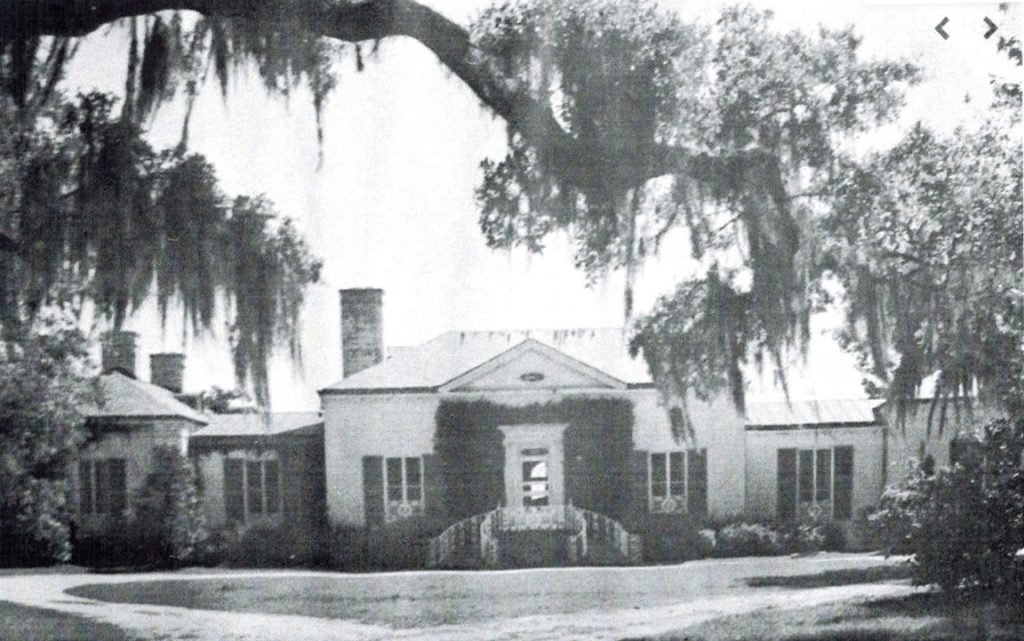Our History
Wedgefield Plantation History
A look back: Wedgefield Plantation through the years. Updated February, 2025.

This photo is from the book, “Georgetown Rice Plantation” by Alberta Morel Lachicotte Quattlebaum.
Introduction
At one point, South Carolina was the number one producer of rice in the United States. Recent accounts show that 236,000 acres of rice fields were once part of the South Carolina coast. From the 1770s through the 1800s, approximately 150 plantations in Georgetown County alone were producers of rice. One of these plantations is known today as Wedgefield Plantation. Wedgefield Plantation is steeped in South Carolina history. As far back as 1734, this plantation was already taking root. From its inception, Wedgefield Plantation has had many owners. Below is a chronological account from 1734 to today.
If you like SC ghost stories, here is one about the ghost of Wedgefield Plantation. Yes, we have a ghost!
18th Century **********
1734
John Green received several land grants which were later developed into Wedgefield, Mansfield, Windsor, Beneventum and Peru/Cumbee
plantations.
1738
Joseph Wragg purchased some of this land from John Green.
1757
John Waties purchased the section of land now known as Wedgefield Plantation.
1762
It was then sold to Samual Wragg.
1775 – 1783 Revolutionary War
1787
Samual Wragg died, leaving his son, Samual Wragg, Jr., Wedgefield Plantation.
19th Century **********
1840
Dr. Francis S. Parker acquired this plantation from Wragg, Jr.
1841
Dr. Francis Parker traded the plantation to his father-in-law, Reverend Maurice H. Lance in exchange for Greenwich Plantation. Reverend
Lance’s wife was Anna Taylor Allston, who was heir to several other properties, including Mansfield Plantation, which was adjacent to
Wedgefield.
1850
Over the years, Georgetown plantation owners realized great wealth with their production of rice. In 1850 alone, Reverend Lance produced
660,000 pounds of rice between his several plantations.
1861 – 1865 The Civil War
With the end of The Civil War and the subsequent abolition of slavery, plantation owners realized many hardships. During this time, the property now known as Wedgefield Plantation had two other owners, John Francis Pyatt and Joanna Gaillard.
1888
Joanna Gaillard sold Wedgefield Plantation to the Hazzard family who assigned a nephew to manage the dwindling rice fields.
20th Century **********
1909
Frederick Wentworth Ford bought the planation from the Hazzard family.
1920
Ford sold Wedgefield to James J. Scurry and E.F. Prosser.
1920s
Wedgefield Plantation was sold several more times to various people, whose names are not documented.
1935
Robert Goelet of New York, NY and Newport, RI bought the Wedgefield property, tore down the 2 nd constructed manor house and built yet a 3rd one, which presently graces the grounds of Wedgefield Plantation.
1946
Ingram Dargon Lumber bought the property.
1947
Lumber deeded Wedgefield over to Stewart Clare.
1950
John P. Hazzard, III , bought Wedgefield Plantation. He was a descendent of the previous Hazzard purchasers.
1970
Wedgefield was sold to a land development company for the construction of a residential and golf course community.
1972
Wedgefield Plantation Golf Course opened, but soon fell into financial trouble. At some point during this time, Wedgefield Plantation homesites and the Wedgefield Plantation golf course became separate entities.
1975 Wedgefield Associates purchased the golf course, clubhouse, grounds and remaining residential lots out of bankruptcy.
21st Century **********
2004
The Marlowe family of Georgetown bought the golf course and made improvements to the drainage and irrigation systems.
2016
Ray Watts, a Charlotte based developer, bought the golf course from the Marlowe family. It subsequently closed due to poor financial performance.
2018
Mitch Thompkins, a local resident, reopened the golf course through a land lease deal and began its refurbishment. Through his hard work and painstaking efforts, the golf course, what is now called Wedgefield Country Club, was once again welcoming golfers to the plantation.
2021
David Crescenzo, Phil Crescenzo, Christian Crescenzo and Timothy Kane (late) purchased what is now known as Wedgefield Country Club.
The Crescenzos continue to improve Wedgefield Country Club with the many course improvements, a vibrant social clubhouse and beautiful manor house that is the perfect venue for weddings and other social events. The original cottages have been revamped and modernized as well and offer a “stay and play” package for out of town guests.
Much of the material for this history came from the “Historical Rice Atlas” by Suzanne Cameron Linder and Marta Leslie Thacker, and “Georgetown Rice Plantations” by Albert Morel Lachicotte Quattlebaum.
Wedgefield Plantation Country Club
Wedgefield Country Club is nestled within Wedgefield Plantation. This 18 – hole championship golf course was founded in 1972, along with the development of the homesite community of Wedgefield Plantation. The course was designed by the renowned Porter Gibson and Bob Toski. It is a par 72 course with 17 water hazards throughout. Beautiful live oaks adorn the grounds, creating a picturesque landscape throughout the neighborhood, golf course and clubhouse areas. As part of the country club, there is a manor house for special events, a pub to enjoy food and beverages, along with a number of cottages and guest rooms with modern amenities for rent on the property.
Present Day
Today, Wedgefield Plantation is a thriving community of over 550 residences. The entrance to the plantation is both stunning and nostalgic. Beautiful live oak trees grace the entrance and can also be found throughout the community. Creeks and canals meander around and through this gorgeous neighborhood. Because of the preservation efforts of the community, many natural surroundings remain, providing an abundant habitat for deer, fox, rabbits, many types of birds and yes, even alligators. Within the confines of Wedgefield Plantation, there is a renowned golf course that winds its way through the neighborhood. Wedgefield Plantation is a true testament of how history and present day can compliment each other to produce the beautiful retreat in which to live.
